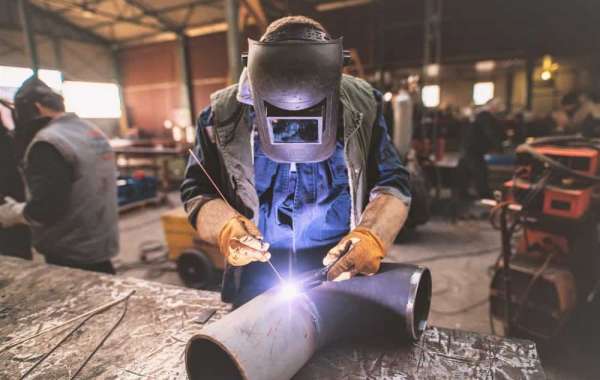Introduction
Heavy steel fabrication is a crucial process in many industries, including construction, automotive, and manufacturing. It involves the creation of large and complex steel structures through cutting, bending, and assembling steel components. While heavy steel fabrication is essential, it comes with several challenges that can affect the quality, safety, and efficiency of the projects. In this blog, we'll explore these challenges and discuss potential solutions to overcome them.
Challenge 1: Material Quality
One of the most significant challenges in heavy steel fabrication is ensuring the quality of the raw materials. The steel used in fabrication must meet specific standards to ensure the final product's strength, durability, and safety. However, variations in steel quality can occur due to impurities, incorrect alloy compositions, or inconsistent manufacturing processes.
Solution: Rigorous Quality Control
To address this challenge, it is essential to implement rigorous quality control measures. This includes inspecting the raw materials before they enter the fabrication process. Techniques such as X-ray fluorescence (XRF) and ultrasonic testing can be used to detect impurities and inconsistencies in the steel. Additionally, working with reputable steel suppliers who adhere to industry standards can help ensure the quality of the materials used.
Challenge 2: Precision and Accuracy
Heavy steel fabrication requires precise measurements and accurate cuts to ensure the components fit together correctly. Any deviation from the specified dimensions can lead to structural weaknesses, which can compromise the safety and integrity of the final product. Achieving high levels of precision and accuracy can be particularly challenging when working with large and heavy steel pieces.
Solution: Advanced Cutting and Measuring Tools
To achieve the necessary precision, fabricators can use advanced cutting and measuring tools. Computer Numerical Control (CNC) machines, for example, can make precise cuts based on computer-generated designs. Laser cutting and plasma cutting are also effective methods for achieving high accuracy. Additionally, using 3D modeling software can help visualize the final product and identify potential issues before fabrication begins.
Challenge 3: Welding Quality
Welding is a critical step in heavy steel fabrication, as it involves joining steel components together to form the final structure. Poor welding quality can lead to weak joints, which can compromise the structural integrity and safety of the product. Welding large and thick steel pieces can be particularly challenging, as it requires significant skill and expertise.
Solution: Skilled Welders and Advanced Techniques
To ensure high-quality welds, it is essential to employ skilled welders who are trained in various welding techniques. Additionally, using advanced welding methods such as submerged arc welding (SAW) or gas metal arc welding (GMAW) can help achieve stronger and more reliable joints. Regular inspections and non-destructive testing methods, such as radiographic or ultrasonic testing, can also help identify any welding defects that need to be addressed.
Challenge 4: Handling and Transportation
Heavy steel fabrication involves the handling and transportation of large and heavy steel components. Moving these components within the fabrication facility and transporting them to the construction site can be challenging and poses safety risks. Improper handling and transportation can lead to damage, delays, and accidents.
Solution: Proper Equipment and Training
To address this challenge, it is crucial to use the proper equipment for handling and transporting heavy steel components. This includes cranes, forklifts, and specialized transport vehicles designed to carry large and heavy loads. Additionally, ensuring that workers are adequately trained in the safe handling and transportation of heavy steel can help prevent accidents and damage. Implementing strict safety protocols and conducting regular safety inspections can also minimize risks.
Challenge 5: Cost Management
Heavy steel fabrication projects can be expensive, with costs associated with raw materials, labor, equipment, and transportation. Managing these costs effectively is essential to ensure the project's profitability and success. However, cost overruns can occur due to unforeseen issues, such as material shortages, equipment breakdowns, or design changes.
Solution: Efficient Project Management
Effective project management is key to managing costs in heavy steel fabrication. This involves detailed planning, budgeting, and scheduling to ensure that all aspects of the project are accounted for. Using project management software can help track progress, identify potential issues, and make necessary adjustments in real time. Additionally, maintaining open communication with all stakeholders can help address any problems quickly and efficiently, preventing costly delays.
Conclusion
Heavy steel fabrication is a complex and challenging process that requires careful planning, skilled labor, and advanced technology. By addressing the challenges of material quality, precision, welding, handling, transportation, and cost management, fabricators can ensure the production of high-quality and safe steel structures. Implementing rigorous quality control measures, using advanced tools and techniques, and practicing efficient project management are essential steps in overcoming these challenges. By doing so, the heavy steel fabrication companies can continue to play a vital role in the development of infrastructure and various other industries.




